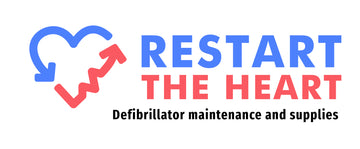Medical Tools: How to Use Automated External Defibrillators
The human heart is one of the most critical organs in the body. Without one, blood won't flow to the body, and the person will die. Naturally, many medical pieces of equipment can supplement heart function to ensure it works properly. One perfect example of this is a defibrillator.
Defibrillators are used to help treat irregular heartbeats and rhythms. The device's paddles are placed on the chest and administered through the skin, and then sends electroshock waves to the heart to reestablish normal rhythm. Modern automated external defibrillators (AED) are preloaded with instructions to walk the user through the process. The device also allows for a shorter shock, and it automatically stops when the heart is taken back to a normal rhythm. As such, it's one of the easier defibrillators that one can use, even without the help of a medical professional.
In this article, we'll guide you on using an AED. Read on below to get started.
How to Use an AED on an Adult
If you’re using an AED on an adult, here is a step-by-step guide:
#1 - Check for Responsiveness
Check if the patient is responsive by touching them lightly on the shoulders or the cheek. If the person is responsive and conscious, you may proceed to the next step.
#2 - Check for Breathing
If the patient is unresponsive, look for breathing. In an unconscious adult, breathing is indicated by chest expansion and exhalation, which may be visible with an open shirt. If the patient is breathing, you may proceed to the next step. If they're not, begin CPR and use the AED.
#3 - Open the AED
Unpack the AED and take a quick look at the directions on using the device.
#4 - Connect the Electrodes
Connect the defibrillator's electrodes to the patient. Remove any clothing that is in the way. Make sure to connect the electrodes to the right places: the red electrode to the right side of the chest and the black electrode to the left side.
#5 - Press the "Shock" Button
Press the "shock" button when ready. The AED may automatically administer a shock or require you to press the button again. If the patient's heart is back to normal, you can now remove the electrodes and cover the chest with a blanket. Make sure to report your findings to the medical professionals when they arrive.
How to Use an AED on a Child
The technique used to use an AED for a child is almost the same as for adults. However, there are some slight differences.
#1 - Check for Responsiveness
Check if the patient is responsive by touching them lightly on the shoulder or the cheek. If the child is responsive and conscious, you may proceed to the next step. If they're not, begin CPR and use the AED.
#2 - Check for Breathing
If the child is unresponsive, look for breathing. In an unconscious child, breathing is indicated by chest expansion and exhalation, which may be visible with an open shirt. If the child is breathing, you may proceed to the next step. If they're not, begin CPR and use the AED.
#3 - Open the AED
Unpack the AED and take a quick look at the instructions on using the device.
#4 - Connect the Electrodes
Remove any clothing that's in the way. Make sure to connect the electrodes to the right places: the red electrode to the right side of the chest and the black electrode to the left side.
#5 - Press the "Shock" button
Press the "shock" button when ready. The AED may automatically administer a shock or require you to press the button again. If the child's heart is back to normal, you can now remove the electrodes and cover the chest with a blanket. Make sure to report your findings to the medical professionals when they arrive.
Important Things to Remember
- If the patient's heart is beating irregularly, shock their heart only when pressing the "shock" button. Don't shock the heart even if they're unconscious and not breathing.
- If the AED gives no response, remove the electrode pads and see if there are any torn or broken wires. If this happens, do not use the AED.
- If the device gives an excessive shock, disconnect the electrodes from the patient. Make sure that you remove the electrode pads from the patient's chest.
- Before using an AED, make sure that it is in good condition. If it is outdated, or if it is not working correctly, don't use it.
Conclusion
An AED can be a lifesaver, especially if it's used correctly. You must know how to use one, especially if your workplace or home is close to a public area. Knowing how to use an AED may not just save a life but could also save yours in case you need to use it yourself.
Restart the Heart has what you need if you're looking for defibrillator supplies! We have pads and batteries that will work for any brand at affordable prices. Simply go to our website and check it out!
